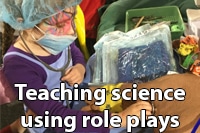
It’s more than just dress ups!
Role-playing in education has been used for years as a tool for kids to understand the world around them. By combining play, games and simulation in scenarios that teach science, students get a real feel for what it is like to be in the real situation. The main thing is that you’ll need to do a bit of thinking and pre-planning so that your roleplay in the classroom has the best chance of succeeding!
Role play lesson preparation
- Get your objectives for the science lesson down first. What do you want them to learn? Are the students needing to prepare a report or presentation about this later? Is this going to be part of a public performance? A bit of pre-planning here will help focus the science lesson and keep the objective clear on learning outcomes. Also, this is a good time to think carefully about the skills you want to develop in your students too!
- Get pragmatic; what constraints are there on the lesson? How much time do you have to put this together? Are the students going to be working in small groups or all together? What is your budget for materials?
- What context will the students be working in? It’s worth defining their roles and character objectives so they know what they’re meant to be achieving. It’s worth thinking carefully about your student’s personalities when planning out a role-playing scenario.
- Plan for some time for your students to do some research about the topic before you run the role play and give them the opportunity to bring their newfound ideas into the session – make it student-led where ever possible.
- Think about the framework in how you’ll debrief the students afterwards. Is this a class discussion or is it more of a reflection task? This might form part of the assessment component of your unit of work too.
Once you’ve put this together you’ll have to pitch your concept to the class. Yes, you could simply ‘enforce it’ but you’ll get much better results when you get students to see why this is an awesome opportunity to step outside of normal day to day lessons. It’s always better to have them ‘buy-in’!
3 things that get students excited about science role plays
- Props! Collect as many materials as you can to make the role-playing game as immersive as possible. Even simple clothing items can be turned into professional outfits (get the kids to help make these items themselves). Some role play scenarios can get quite elaborate; I took my kids to a pet show a couple of months ago and the RSPCA had set up a mock surgery with veterinary students helping the children learn about how vets look after sick and injured animals.
- Learning about veterinary care of sick animals
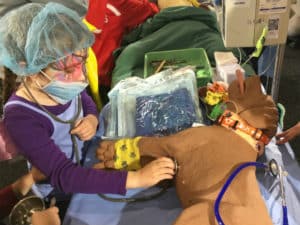
Role-playing a veterinary operation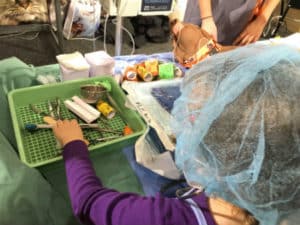
- Get audio tracks of the environment you’re simulating. You’d be amazed what you can find on sites such as freesound.org where you can use the collections of Creative Commons Licensed sounds to create an ambience of the real thing. Of course, be mindful about the sounds you use
- Create a story around the role-play scenario you’re giving your students. Make it as immersive and realistic as possible. Your students could help make the storyboard for others to follow here too. The Challenger Discovery Center in Rochester USA does a fantastic job in making a Mission to Mars role play come alive through a compelling story which requires students to thoroughly understand their roles prior to the actual visit to their science centre.
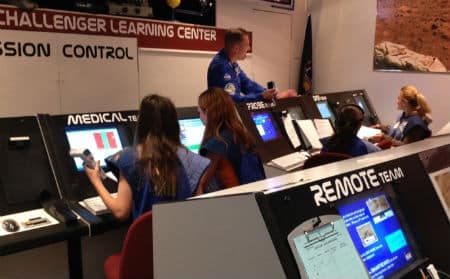
Challenger Learning Center, New York
There are so many ways you could use role plays to get kids immersed in the content you’re presenting in class. Once you set the ground rules and students know what will be achieved you might be surprised how well they take your concept and run with it! Besides, these lessons can be a lot of fun too 🙂
Happy teaching,
NEW Primary science teaching book!
“Be Amazing! How to teach science, the way primary kids love”

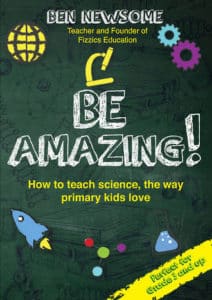

























Comments